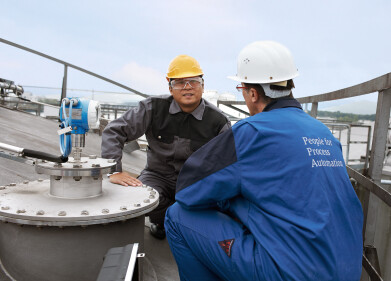Analytical Instrumentation
What's Happening to the Shale Boom?
Jul 17 2017
Over the past few years, the shale industry has posed a serious threat to the global oil and gas market. But now, some analysts are warning that the second wave of the shale boom could be about to grind to a halt.
One of the early warning signs is a drop in the number of global oil rigs. Earlier this month the global count fell by two, which represented the first decline in six months. While it’s too early to label it a trend, a stabilisation or even decline in the number of operational oil rigs could significantly lift the market.
Shale’s “swing producer” status
And with oil prices now hovering below US$45 per barrel, the US shale market could find it hard to maintain growth. This reflects its status as a “swing producer,” a term that describes its tendency to ramp up and down depending on the needs of the market. For some analysts, this serves as proof that the mid US$40 mark is the threshold that has the power to swing shale in either direction.
A second observation also suggests US shale could be struggling, with the EIA reporting that US oil production dipped by 100,000 bpd on the week ending June 23. It was the biggest weekly drop in more than 12 months, and could also help to reign in the shale market.
Shale drillers remain confident
Of course, there’s always that chance that the latest string of data could represent a mere hiccup for the shale industry. If the global rig count and weekly production figures recover and continue on their year-long climb, the US shale market could quickly find its feet and continue to thrive. Many US shale drillers also maintain that they’ve dramatically reduced breakeven thresholds, and are more than capable of surviving in a US$40per barrel oil price landscape.
While the oil market may be shaky, there’s still heavy demand from the aviation industry. While Aviation Gasoline (Avgas) is a popular fuel, it also contains toxic traces of lead which is dispersed into the atmosphere during the combustion process. With the goal of reducing lead emissions, the FAA and Environmental Protection Agency are working together to eliminate these emissions from gasoline piston-engine aircraft. PAC’s cutting edge OptiFZP automated freezing point analyser is playing a central role in lab research, capable of creating temperatures below -100°C without the need for external chillers. Find out more in ‘Freezing Point Determination of AVGAS and Jet Fuel.’
Digital Edition
PIN 25.1 Feb/March
March 2024
In This Edition Safety - The technology behind the ION Science Tiger XT - Safety with ammonia and LOHCs as hydrogen carriers Analytical Instrumentation - Discussion on new tribology te...
View all digital editions
Events
Apr 22 2024 Hannover, Germany
Apr 22 2024 Marrakech, Morroco
Apr 22 2024 Muscat, Oman
Apr 22 2024 Rotterdam, Netherlands
Apr 23 2024 Singapore


















